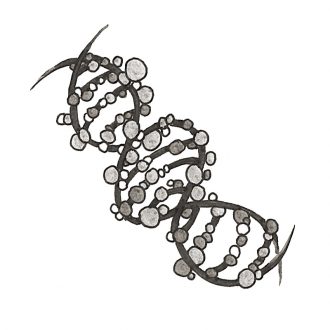
Related Questions
- Could I put a computer chip in my brain to make me smarter?
- How do doctors detect cancer in the human body?
- Do humans emit radiation?
- Why can’t machines — or humans — sniff out drugs or explosives as well as dogs?
- Must all organisms age and die?
- How did life on Earth begin?
- Is it possible to control someone’s thoughts?
- How are thoughts measured?
- Can hearts, livers, and kidneys be grown in the lab for human transplants?
- What are thoughts made of?
Can medical prostheses advance further, and what are their potential risks?
Of course they can! The only risk is keeping our ambitions too modest…
By Sarah JensenThe line between reality and a sci-fi movie becomes increasingly blurred: soldiers don robotic suits and load ordnance onto fighter jets, Flex-Foot Cheetah orthoses allow amputees to bring home Olympic gold, and titanium hips and brand-new arteries allow Grandma to put down her knitting and hit the links. “We’re making huge advances in prostheses and we’ll certainly continue to progress,” says Woodie Flowers, MIT emeritus professor of mechanical engineering.
The prosthetics spectrum includes the artificial limbs, teeth, and arteries that take over after a body part has been damaged or lost. There are also devices that operate in parallel with existing organs and limbs. At the far extreme are biologically engineered materials that cause the body to repair itself.
“The blockbuster advancements of the future will involve the use of stem cells to create a scaffold upon which the body can create new tissue,” says Flowers. Cardiologists are already fashioning replacement arteries with donated live human tissue, moving from the synthetic materials they used in the past. It’s only a matter of time before researchers discover ways to coax the body into generating new vascular cells, just as dentists create secure seats for implants by placing a mix of cadaver bone and human growth hormone in patients’ jaws. The body responds by growing bone strong enough to support the threaded titanium socket that holds the new tooth.
As computers become tinier and we understand more about the brain and central nervous system, external prostheses will continue to improve as well. “Limb movement is extremely finessed,” says Flowers, whose work includes the development of computer-controlled artificial legs. “You can’t achieve a normal gait or get the spoon to your mouth without precise control.” Artificial limbs of the past had slight connections with muscles and nerves, and that meant limited control. But robotic limbs like the Luke Arm spell hope for amputees and people with spinal injuries. Wired directly to nerves and muscles, such devices respond to brain impulses, enabling the precision necessary to manipulate a spoon, a watercolor brush, or a steering wheel.
In the world of prostheses, Flowers notes, cosmesis often trumps practicality — people want to look normal. And researchers are working on that, too. Flowers cites MIT graduate Hugh Herr, who with his colleagues in the biomechatronics research group in MIT’s Media Lab, is developing a prosthetic ankle that faithfully mimics natural human gait.
Despite all these efforts, prostheses do sometimes fail — or wear out as we live longer and outlast our new knees and arms and aortas. “The human body has evolved over a long period, and it works well because it’s been tested through millions of cycles,” says Flowers. “When you disturb that equilibrium, it’s hard to know what might happen in 50 years. That uncertainty will always constitute a risk.” Flowers is confident that as biocompatibility is better understood, progress on prostheses will continue and the risk of the body rejecting replacement parts will become a thing of the past. “The biggest threat to further progress would be a failure to fund research,” he says. “It’s crucial that we continue investigating technologies that will lead to advancement.”
Thanks to Maria of Clifton Park, N.Y., for this question.
Posted: April 16, 2013